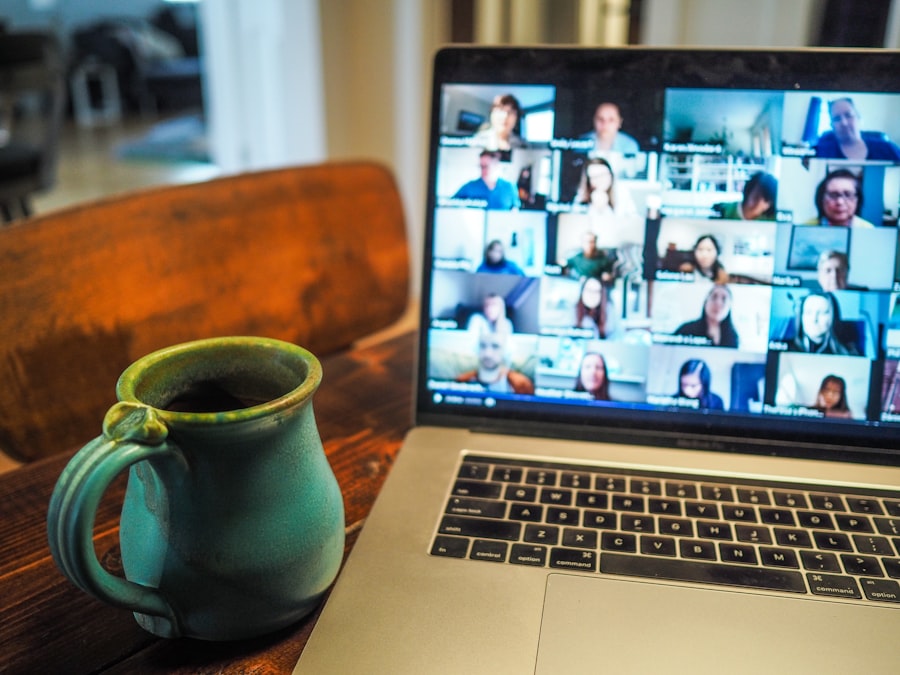
Internet Fhicks: Navigating Online Trends
The term “Internet fads” refers to the fleeting trends that capture the collective attention of online users, often characterized by their rapid rise and fall in popularity. These fads can manifest in various forms, including viral challenges, memes, or even specific products that gain sudden traction through social media platforms. The ephemeral nature of these trends is a defining feature; they can dominate discussions for a few weeks or months before being replaced by the next big thing.
Understanding the mechanics behind these fads is crucial for both consumers and businesses alike, as they reflect broader cultural shifts and consumer interests. Internet fads often emerge from a combination of creativity, humor, and relatability. For instance, the “Ice Bucket Challenge” became a global phenomenon not just because of its charitable intent but also due to its engaging and entertaining format.
Participants would film themselves pouring ice water over their heads and challenge others to do the same, creating a sense of community and competition. This example illustrates how fads can leverage social media’s viral potential, where users share content rapidly, leading to widespread participation. The dynamics of these trends are influenced by algorithms that prioritize engaging content, making it essential to understand how they operate within the digital landscape.
Key Takeaways
- Internet fhicks are sudden and unpredictable shifts in online trends and behaviors.
- Current online trends include viral challenges, meme culture, and influencer marketing.
- Social media fhicks refer to the rapid changes in user behavior and platform algorithms.
- Internet fhicks can influence consumer purchasing decisions and brand loyalty.
- Businesses can leverage internet fhicks by staying agile, engaging with online communities, and creating relevant content.
Identifying Current Online Trends
To effectively identify current online trends, one must engage with various digital platforms and observe the patterns that emerge within them. Social media sites like TikTok, Instagram, and Twitter serve as breeding grounds for new trends, where users share content that resonates with their peers. Monitoring hashtags, trending topics, and viral challenges can provide insights into what captures the public’s imagination at any given moment.
Additionally, tools like Google Trends can help track search interest over time, revealing spikes in popularity that correlate with specific events or cultural phenomena. Another critical aspect of identifying trends is understanding the demographic factors that influence them. Different age groups and communities may gravitate toward distinct types of content.
For example, TikTok has become particularly popular among younger audiences, leading to trends that reflect their interests and values. Conversely, platforms like Facebook may cater more to older demographics, resulting in different types of fads emerging there. By analyzing user engagement metrics and demographic data, one can gain a clearer picture of which trends are likely to endure and which are merely passing fancies.
Navigating Social Media Fhicks

Navigating social media fads requires a keen awareness of the platforms’ unique cultures and user behaviors. Each social media site has its own set of norms and expectations that dictate how content is created and shared. For instance, TikTok thrives on short-form video content that is often humorous or visually engaging, while Instagram focuses more on aesthetically pleasing images and curated feeds.
Understanding these nuances is essential for anyone looking to participate in or capitalize on current trends. Moreover, engaging with social media fads often involves a level of authenticity and relatability. Users are drawn to content that feels genuine and reflects their own experiences or aspirations.
This is why many viral challenges encourage participation from everyday individuals rather than just influencers or celebrities. For example, the “Mannequin Challenge,” where participants freeze in place while a camera moves through a scene, gained traction because it was accessible to anyone with a smartphone. By fostering a sense of community and shared experience, these fads can create lasting connections among users.
The Impact of Internet Fhicks on Consumer Behavior
| Internet Fhicks Impact on Consumer Behavior | Metrics |
|---|---|
| 1 | Influence on purchasing decisions |
| 2 | Changes in shopping habits |
| 3 | Impact on brand loyalty |
| 4 | Effect on product research and comparison |
| 5 | Shift in customer expectations |
The influence of Internet fads on consumer behavior is profound and multifaceted. When a trend captures public interest, it can lead to significant shifts in purchasing decisions and brand loyalty. For instance, the rise of “clean beauty” products was largely driven by social media influencers who promoted natural ingredients and sustainable practices.
As consumers became more aware of these trends through platforms like Instagram and YouTube, they began to seek out brands that aligned with their values, leading to a surge in sales for companies that embraced this movement. Additionally, Internet fads can create urgency around products or experiences. Limited-time offers or exclusive releases tied to trending topics can drive consumers to make impulsive purchases out of fear of missing out (FOMO).
The sneaker culture surrounding brands like Nike and Adidas showcases how fads can create a sense of exclusivity and desirability, prompting consumers to act quickly to secure their desired products.
How Businesses Can Utilize Internet Fhicks
Businesses can harness the power of Internet fads to enhance their marketing strategies and engage with consumers more effectively. One approach is to align marketing campaigns with current trends, creating content that resonates with the zeitgeist. For example, during the height of the “TikTok dance challenge” craze, brands began collaborating with popular TikTok creators to promote their products through dance videos.
This not only increased brand visibility but also positioned the companies as relevant players in the cultural conversation. Moreover, businesses can leverage user-generated content (UGC) as part of their marketing efforts. Encouraging customers to share their experiences with products or services through social media can amplify brand reach and authenticity.
Campaigns that invite users to participate in challenges or share their stories related to a trend can create a sense of community around the brand. For instance, Coca-Cola’s “Share a Coke” campaign invited consumers to find bottles with their names on them and share photos online, resulting in widespread engagement and increased sales.
The Risks and Benefits of Following Internet Fhicks

While there are undeniable benefits to engaging with Internet fads, there are also inherent risks that businesses must consider. One significant risk is the potential for backlash if a brand missteps in its attempt to capitalize on a trend. If a company appears insincere or fails to understand the cultural context of a fad, it can lead to negative publicity and damage its reputation.
For example, when brands attempt to co-opt social justice movements without genuine commitment or understanding, they may face criticism for being opportunistic rather than supportive. On the other hand, successfully navigating Internet fads can yield substantial rewards for businesses willing to take calculated risks. Brands that authentically engage with trends can enhance their relevance in consumers’ minds and foster loyalty among their target audience.
Additionally, being an early adopter of a trend can position a company as an industry leader, setting it apart from competitors who may be slower to respond. The key lies in balancing innovation with authenticity while remaining attuned to the evolving landscape of online culture.
The Psychology Behind Internet Fhicks
The psychology behind Internet fads is rooted in human behavior and social dynamics. One driving force is the desire for social connection; people are inherently social beings who seek validation and belonging within their communities. When a trend emerges, individuals often feel compelled to participate as a way to connect with others and demonstrate their alignment with popular culture.
This phenomenon is amplified by social media’s ability to showcase participation through likes, shares, and comments. Another psychological aspect is the concept of social proof—people tend to look to others when making decisions about what is popular or desirable. When they see friends or influencers engaging with a trend, they are more likely to join in themselves.
This creates a cycle where trends gain momentum as more individuals participate, further reinforcing their popularity. Additionally, the element of novelty plays a crucial role; humans are naturally drawn to new experiences and ideas, making them more likely to engage with fresh content that captures their attention.
Navigating Online Trends for Personal Growth and Development
Engaging with online trends can also serve as a catalyst for personal growth and development. By participating in challenges or exploring new ideas presented through Internet fads, individuals can step outside their comfort zones and develop new skills or perspectives. For instance, fitness challenges that go viral on social media often encourage participants to adopt healthier lifestyles or try new workout routines they might not have considered otherwise.
Furthermore, online trends can provide valuable opportunities for learning and self-expression. Platforms like YouTube offer countless tutorials on various subjects—from cooking to coding—allowing users to acquire new skills at their own pace. By actively seeking out trends that align with personal interests or goals, individuals can harness the power of the internet not just for entertainment but also for meaningful growth and development in their lives.
FAQs
What are internet hoaxes?
Internet hoaxes are false or misleading information spread online with the intent to deceive or trick people. They can take the form of fake news articles, photoshopped images, or fabricated stories designed to go viral and mislead the public.
How can you identify internet hoaxes?
You can identify internet hoaxes by fact-checking the information with reliable sources, looking for inconsistencies in the story, and being skeptical of sensational or shocking claims. It’s important to verify the information before sharing it with others.
Why do people create internet hoaxes?
People create internet hoaxes for various reasons, including seeking attention, promoting a specific agenda, or simply for the thrill of deceiving others. Some hoaxes are also created for malicious purposes, such as spreading misinformation to cause harm or confusion.
What are the potential consequences of falling for internet hoaxes?
Falling for internet hoaxes can lead to spreading false information, damaging one’s credibility, and causing unnecessary panic or fear. It can also contribute to the spread of misinformation and distrust in legitimate sources of news and information.
How can we combat internet hoaxes?
To combat internet hoaxes, it’s important to verify information before sharing it, educate others about the dangers of hoaxes, and report false information to the platforms where it is being spread. Critical thinking and media literacy skills are also essential in identifying and avoiding internet hoaxes.



